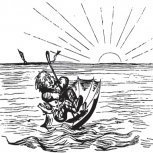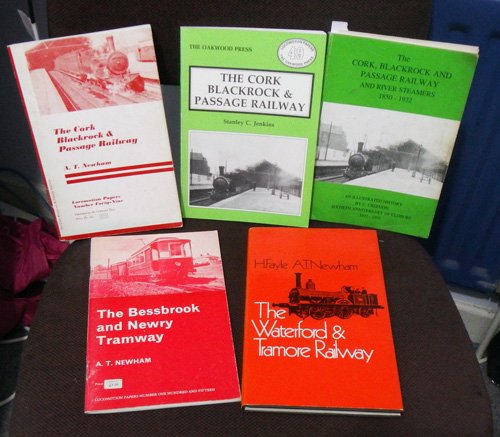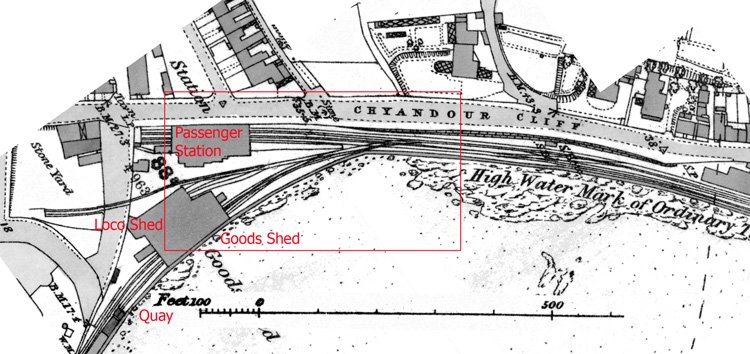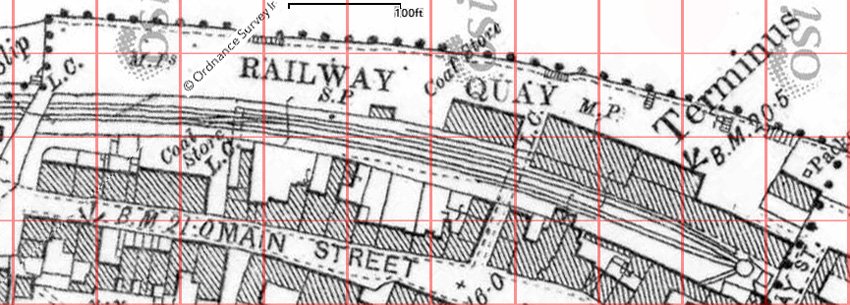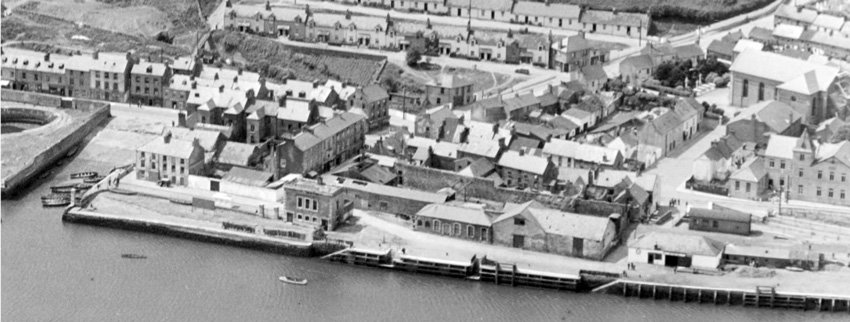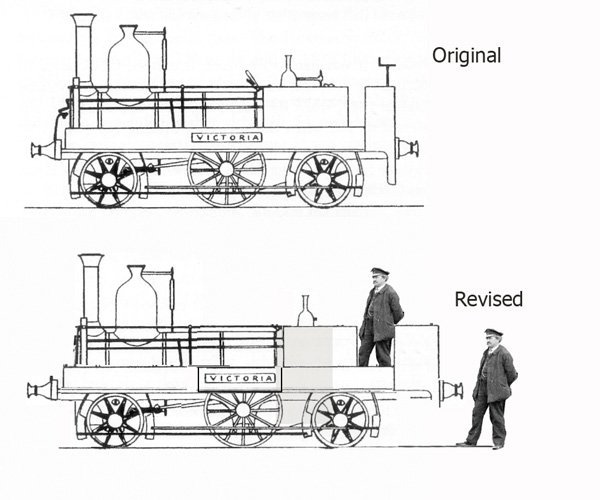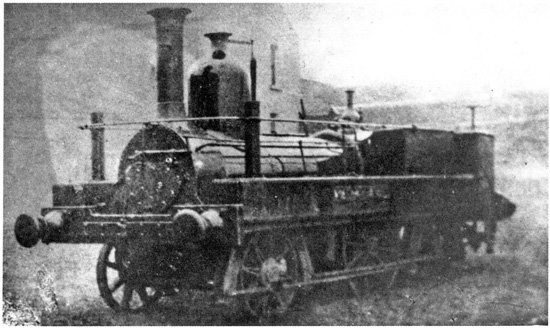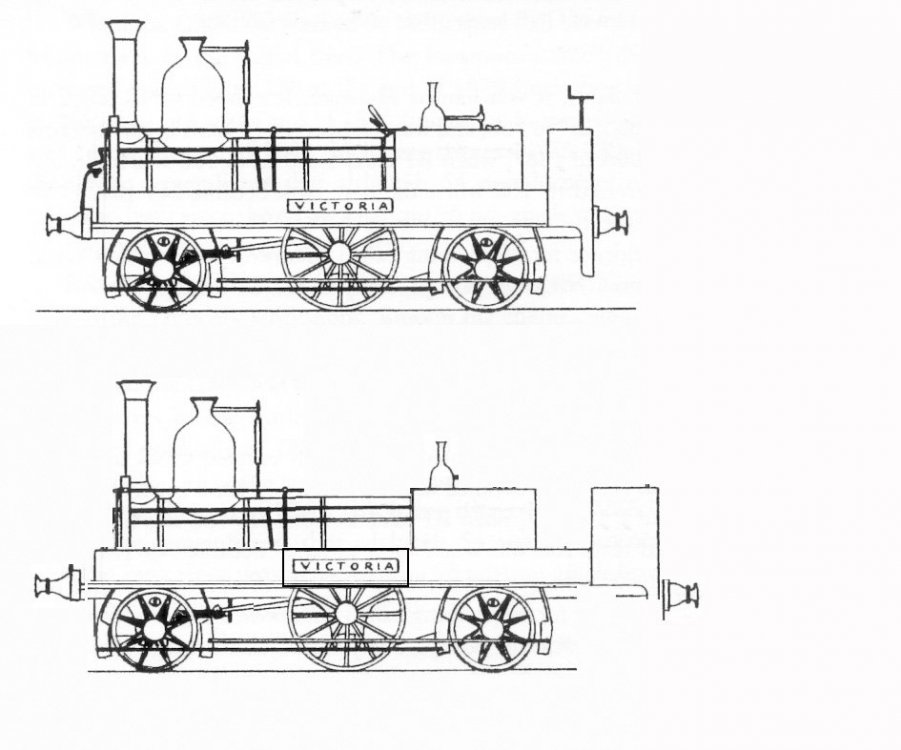-
Posts
164 -
Joined
-
Days Won
4
Content Type
Profiles
Forums
Events
Gallery
Blogs
Store
Community Map
Everything posted by RichL
-
Looking forward very much to its publication. In the meantime I am accumulating a few other books to keep me occupied
-
For broad gauge lines, maybe a long route is believable as they potentially had all the time in the world from the early 1830s to gradually extend. The earliest narrow gauge lines in Ireland were probably 30-40 years too late to envisage anything very long, except in comparatively remote areas like Donegal where few or no railways already existed and public money of one kind or another could guarantee their construction and economic survival. A scheme like the Ulster & Connaught just doesn't tick any of those boxes at all! Mind you, we ridicule the idea of long NG lines, but South Africa and much of SE Asia (amongst others) used exclusively a gauge only 3" to 6" wider than the Irish 3ft gauge and look how far their lines stretched. I think any NG line I include in the model would likely be short in nature, simply to make it more believable. Nevertheless, knowledge that the Ulster & Connaught seriously considered a long section of dual gauge track could always be quoted when doubters question my own use of such an idea.
-
At this stage I have no hard views on where the model should be located. I kind of like the concept of a short, independent line simply to allow me to model a few oddities as well as the normal stuff that so many people already run. Short trains and small locomotives also allow for a smaller layout. The 3 short lines I mentioned do seem to have a bit in common - built by Dargan and quite possibly with very similar rolling stock in the early years. I have thought of a number of scenarios. Here is just one, as an example. Newry is a kind of 'Cinderella' patch of Ireland (in railway terms) where UTA, GNR and CIE, not forgetting the LNWR and narrow gauge, were close by at one time or another - though not all at the same time. It is also relatively populous. Adding just one or two of the many proposed additions to the railway network in the area - some of which got as far as Acts of Parliament - provides lots of potential. There were proposals for railways east from Warrenpoint and also south from Newcastle. Another line that got an Act was one from Downpatrick to Newry. The Newry & Armagh was originally supposed to extend to Enniskillen (the last section jointly with the Dundalk & Enniskillen - later Irish North Western). At a push that could even bring SL&NC trains to the area. An independent line could have survived until at least the late 1940s as it would inevitably have avoided the GSR amalgamation. With even a minor cross-border addition, an independent line in Newry could also have avoided absorption into the UTA. Economics make that all unlikely however - but maybe not quite as unlikely as some railways that were actually built However, as you suggest, one can spend far too long imagining scenarios, when an ambiguous 'might be anywhere' kind of terminus would probably be good enough. I managed to find online some old copies of Herapath's Journal and newspaper extracts from the formation period of these lines. They make fascinating reading! Lord Newry almost seems to have been a mini-George Hudson - financing one line with funds meant for another etc. There is certainly the potential for NG in the area. As mentioned above, extensions from Newcastle and Warrenpoint could have joined up somewhere like Kilkeel or Greencastle, for example - one NG one SG. Great minds think alike - or maybe not so great in my case As mentioned above, the possibility of a 5'3" line extending from Newry to Eniskillen was a possibility too. There are also plenty of potential places where NG lines could have been developed with more determination. There are also strange might-have-been ideas that I found in my researches, like the idea in WW2 to convert the Strabane-Derry NG line to broad gauge, so as to allow troop trains etc to travel south without crossing the border. If the Finn Valley Railway had also never converted to NG then other possibilities emerge. The possibilities are not endless, but there are many nevertheless. I could spend the rest of my life dreaming up scenarios and never find the time to build a model railway Thanks for a very comprehensive response to my ideas! Firstly, I am happy to build mixed gauge track - that is a large part of my concept's appeal - something different to the norm. Unfortunately, typical track layouts take up a lot of space, even in remote places. Penzance is not too different in overall concept to a few genuinely Irish 'tight' locations, even if the exact location of each component may be different in relation to each other. Killybegs, Warrenpoint, Schull spring to mind. The main difference from the norm would be the mix of gauges, which is a personal choice and would be different in organisation to Penzance. Making sure that the buildings, scenery, atmosphere is Irish is well understood, but difficult to define. It would be so easy to end up with a caricature. Irish architecture, for example, is/was incredibly diverse - particularly in larger towns and cities. I am reminded of this view of Cork... One way or another, Rule One will have to apply! Thanks again for the suggestions. Cork was very interesting in that almost every line more or less deliberately avoided the rest, except for the GS&WR absorbing the Cork & Youghal Railway. The Cork & Macroom Direct even severed its connection to the CB&SC (twice!). I read that the odd gauge of the Cork Tramways was determined by the possibility of conveying NG traffic across the city. One early map of a proposal for the Cork Blackrock & Passage swung round to Bandon beyond Passage, with a branch to Kinsale predating the CB&SC branch there. The possibilities are endless! Probably it is best in my case to be as ambiguous as possible. It's not a big issue at the moment though as building some stock is my priority for now. Must finish my NG wagons etc.!
-
Many thanks for the positive and interesting responses. I was on a 50 km walk yesterday and am only slowly recovering my faculties. I shall respond to everyone in due course.
-
Since my previous topic in the layouts area ended up being hijacked as a general track discussion (fine by me) I decided to start afresh. As a reminder of what I envisaged, here's the original photo that inspired me... ...something that fits nicely into a corner of a room and has loads of atmosphere. OK, Penzance isn't exactly Ireland, but most Irish termini are well spread out, even on branch lines to nowhere. This could be made into a convincing Irish layout with a little imagination. The idea could have quite a small footprint in 4mm scale, assuming a lot is left 'off-stage'... The narrow gauge track on my layout would be far more limited than in the photo and the map. It is really a stage for some interesting modelling. I kind of envisage a very minor independent line along the lines of the Waterford & Tramore or similar, with some very dodgy stock and operating practices. There would also be a bit of through running from a 'proper' railway - and a tiny bit of narrow gauge. I use the Waterford and Tramore inspiration very loosely, as I really need a line with a little more operational interest - and I think the W&T is just that little bit too unique and awkward to copy closely. In the course of my research I have found a few other lines that could also provide inspiration. Short, predominantly passenger lines, completely isolated from their neighbours, seem to be a bit of an Irish speciality. The little-known Newry, Warrenpoint & Rostrevor line was another one, if only for a short while. It looks very interesting, but it was absorbed by the Great Northern fairly early on. There seems to be little information that I can easily find, beyond a bit of basic information about the locomotives. Nearly all photos etc. are from after the line was taken over and substantially rebuilt by the GNR. The Cork, Blackrock & Passage is another of the genre - but regauged to 3ft gauge in 1900. There is more information about this one available online (including a Facebook Group) and in books, but almost no useful information about the broad gauge rolling stock. I do like the relatively intensive nature of the service provided though. A freelance line combining aspects of all three could be modelled, filling in gaps with examples from anywhere I can find them. The CB&P seems to have been a really interesting line in broad gauge days, with stock and features almost in the same league as the Waterford & Tramore, but maybe not quite! Aspects of it could definitely be incorporated in the layout. Here is the Cork Terminus, for example, in broad gauge days. (each square is approximately 300mm in 4mm scale) There are several features that I like, such as the turntable at the buffer stop end of the platform. The Station at Passage West had a similar turntable, but was otherwise very basic. Most of this station was still intact a few years after the closure of the line (Britain From Above Image - ref. www.britainfromabove.org.uk/image/xpw042357) The plan is to build a bit of stock before I build the layout. That should give me more time to research and plan the details. In the meantime, I have my test track to run things on. What are peoples views on modelling a freelance Irish railway? Is it a good idea, or should I try and model a railway that really existed - even if the station is fictitious?
-
BRCW had built the B101 class. In the early 1960s they were building the BR Class 27 and 33. These were generally good machines, apart from long term body rot issues. Sulzer engines too, which would have maintained some degree of continuity. BRCW were really struggling to build the BR orders on time though - and effectively went bust in the process. An Irish equivalent of the Class 33 might have been a good bet for CIE - a class 47 equivalent would probably have been too big and in any case was developed by a different company, Brush.
-
Another question would be why didn't CIE continue development of the tried and trusted B101 class, which performed pretty well and was built by one of the better British diesel manufacturers. Even 1100/1101 could have been a basis for development (apart from their brakes).
-
It would be wrong to suggest that GM/EMD was always the perfect choice though. They had a very conservative outlook in relation to engine output. This worked fine in the early 1950s when railroads were happy to put any number of units in front of a train. They had to be dragged kicking and screaming into the turbocharged, big power era by big customers like Santa Fe who bought EMD but substantially rebuilt them to get what they really wanted. Once the railroad proved that it would work reliably for GM then GM brought out its own designs. There were also issues with EMD two-stroke engines in the early years, which had different operating characteristics to the 4-stroke products of Alco and (later) GE. The 2-strokes tended to be sluggish at acceleration and best at slogging along for long distances at relatively constant speeds so not entirely suitable for the constant stop-start of commuter lines, or very undulating terrain. Over time, developments considerably reduced these differences.
-
Problems with an upgrade. For updates see https://www.facebook.com/RMweb-Server-Updates-205398459548735/
-
GM/EMD also had a very slick marketing operation. They came from nowhere to dominate the US market for locos using every marketing trick in the book - mainly learnt through selling automobiles. Once demand for locos in the USA started to flatten out they looked more seriously at overseas markets. They had previously not been very interested in manufacturing for foreign markets, as the 'home' market in the USA, Mexico and Canada kept them very busy. They had allowed foreign manufacturers to build adapted designs under licence, like in Germany and Australia but these only had limited success. Ironically Alco, despite being ultimately something of a failure in the US market, did quite well by comparison overseas - so well that their designs were perpetuated and improved and built in Canada for many years after the parent company's demise. Port costs and transhipping from manufacturing plant to dock/dock to customer are a significant part of the transport costs. Once on a ship sailing on the high seas, costs are relatively small. In the early 1960s there was an abundance of suitable shipping. The difference between shipping across the Irish Sea and across the Atlantic would not be huge in relation to the overall deal. Britain, Germany the USA and other countries had been sending locos half way around the world regularly since the very earliest days of loco construction. By the early 1960s there were really only 2 serious manufacturers of main line diesel electric locos left in the UK - English Electric and Brush. All the others had either gone out of business, abandoned loco construction or were in their final death throes. Even the mighty Beyer Peacock hadn't the funds to develop new locos by this time. Both Brush and EE were pretty busy, so maybe not too interested in Irish orders at the time.
-
Yeah, if I were starting from scratch I might do things differently, but I couldn't bring myself to destroy much of the existing diamond crossing just for a bit more operating potential on what is after all just a test track
-
I've managed a revised drawing taking account of the steam chest and also the firebox. The main difference from the original drawing now is that mine is still stretched a bit towards the rear I think only a mock-up is going to improve things from here - something in 3D to compare directly with the photo. Here's another excellent prototype - original Cork Blackrock & Passage Rly from before the line was converted to narrow gauge - very tempting too, but not for now!
-
I found this online a while ago. Shows a map of the old Penrose Quay station and the Youghal line above it. https://www.horgansquay.com/building-on-tradition/
-
Just to show the finished test track. It occurred to me that the straight track wasn't going to test the ability of stock on curves. I extended the 'spare' ends of the diamond to form an S bend. This involved a slight widening of the board at one end. The curves are fractionally sub-4ft due to using an OO Tracksetta to set the inside of the curves. That's fine as I don't really want to go below 4ft radius on any layout I build in the future - at least not for 21mm main line stock. I shall install a DPDT switch to switch the polarity of the diamond crossing, depending on which route any powered vehicle is on. I almost altered the diamond to a single slip, but decided that would be a step too far!
-
Sorry for the long delay in responding but I have been away for a few days and didn't have access to my notes. You raise a very good point, Mayner! I was mainly going on the photo and drawings of other locos of the same period. The steam chest was full width between the frames in all drawings I looked at. Translating that to the photo , the front of the far front wheel would have to project slightly beyond the front of the steam chest to appear thus in the photo.... On reflection, the steam chest, or at least the lower part of it, is quite narrow. You can see this from the faint outline of the cylinder covers on the front of the steam chest. Having said that, the cylinders were quite short, possibly only 13" stroke (though one source suggests 15"). That's well below the diameter of the wheel at 34". As you rightly suggest though, the steam chest couldn't go over the top of the leading axle - unless it was sloped sharply upwards towards the rear. Not impossible, as some strange angles were used at this period it seems, but perhaps unlikely. When I get the chance I shall take closer look at the front end and try to reconcile the problems.
-
The second photo is definitely a Dublin & Blessington railcar
-
Yes, remarkable. Bachmann's OO9 Baldwin is another example of a fine, but very compact loco in 4mm scale. 'Victoria' is made easier by the tanks along the full length of the boiler which should hide the mechanism. Small motor technology has come on leaps and bounds in the last few years. I should be fine!
-
I have his Crampton book which has some very novel ideas - and his Flexichas book too. Unfortunately, neither seem entirely appropriate. One step at a time though - I want to make sure it looks right, first.
-
N gauge/2mm technology should do it! Not sure yet whether to power the outer axles, or the middle one though. Getting enough weight on the centre drivers might be difficult.
-
-
OK, a brave stab at redrawing the drawing, based on 'correcting' the perspectives on the photo. The main difference is that the loco seems a bit longer at the back and the front wheels are slightly further forward. I think it makes a slightly more elegant loco. Very difficult to be sure though about the dimensions. Next will be a rough 3D mock up so I can compare the changes with the photo. I can better judge the height, diameter and position of the chimney, dome etc from that too. My rear buffer beam is too low, but easily corrected. CAD software might be a better way of doing this, but I don't want to have to learn new software just for one loco. Original at the top, my own rough draft effort below it... I found a photo of an original Grendon loco in 'The Midlland Great Western Railway of Ireland' by Ernie Shepherd, p28. That is a 2-4-0 tender loco built 7 years or so after 'Victoria', but should be handy for some of the smaller details
-
That would make the diamond crossing on my test track interesting! Why not throw in 4ft 8 1/2 as well, since the Dublin & Kingstown might equally not have regauged. One railway (forget which) went for 5ft 2in, which would be impossible on shared track, as would that zero gauge one out West.
-
The topic has been going for less than 1 day so far - a mere 15 hours as I write this!
-
A model is always going to be a better representation of how it used to be?
-
I managed to find the actual catalogue for the 1850 Dublin Exhibition online https://digitalarchive.rds.ie/files/show/2630 How cool is that? It even contains a brief description of the locomotive........ Machines for raising and moving Bodies ; Steam Engines, Carriages, Ships, Boats, Etc. Your Committee next advert to the large cast iron trying table, the locomotive engine, and the stationary steam engines, exhibited by Messrs. Grendon of Drogheda, the working of which latter engine added so much to the interest of the Exhibition, by its being used as the power for moving several irnportant machines exhibited by manufacturers. Their locomotive engine exhibited deserves notice as one of a new class of light passenger engines made by them for the Newry and Warrenpoint Railway, on which it is reported to have worked most satisfactorily. The cylinders of this engine have a diameter of nine inches, with a twelve-inch stroke, and the steam-valves are wrought with the new patent variable expansive link motion. The diameter of the driving wheels is four feet, that of the trailing wheels, two feet ten inches, and the engine is so constructed as to carry sufficient coke and water for a journey of twenty-five miles, at a speed of forty miles per hour. The advantages which it possesses over the engines in general use, as stated by the Messrs. Grendon, are, its not consuming more than one-third of the ordinary quantity of coke, and from its lightness causing much less injury to the permanent way. As the Messrs. Grendon are the first manufacturers, in this country, who have constructed locomotive engines for sale, several of which are at present in use on the Drogheda and other railways, and which are reported by the engineers to have worked effectively for a considerable period, your Committee deem it but just to these spirited and successful manufacturers, to award the Gold Medal, value £5, as expressive of their approbation of these exertions. ......Not a lot more information, but clearly originally built for coke rather than coal - and the diameter of the non-driving wheels is stated, which I did not know. Unfortunately, the wheels I have are 12mm - a scale 2" too big, but don't tell anyone. They will wear down in time.
.png.c363cdf5c3fb7955cd92a55eb6dbbae0.png)

